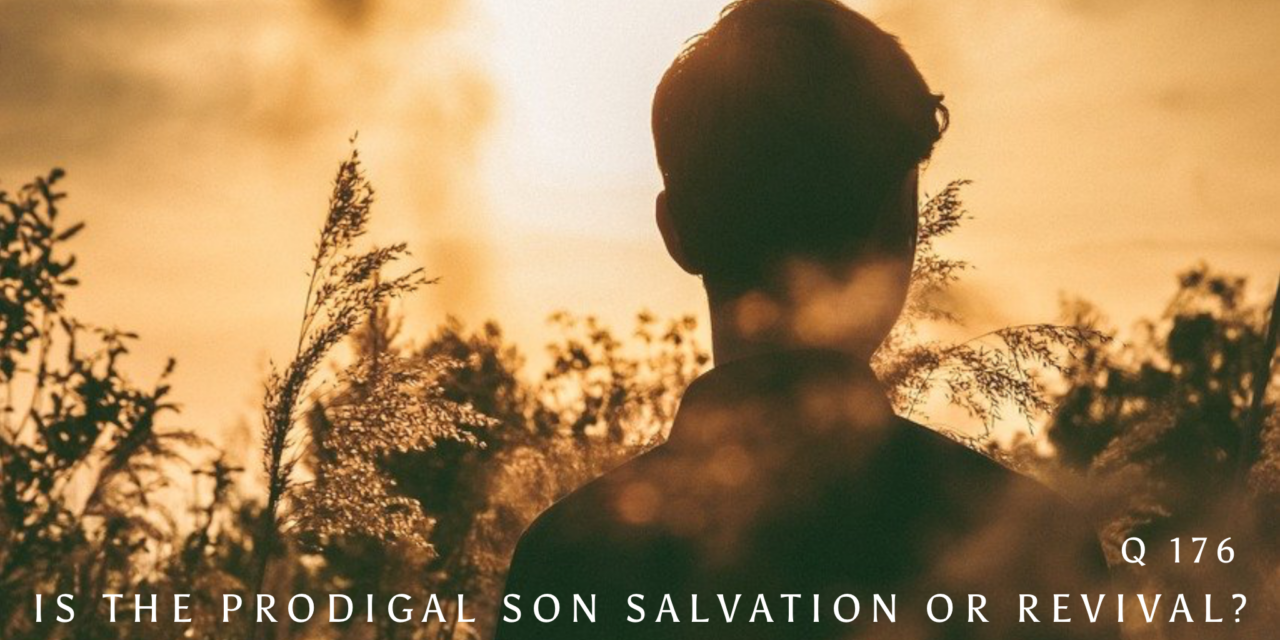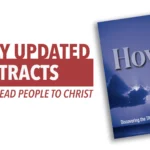Q.
Question: Luke 15 speaks of the lost sheep, coin, prodigal son. Was the son (υἱός) lost as in a lost sinner, or does this speak of revival? Is this an application of a wayward Christian returning to his heavily father or of a lost sinner coming to Christ?
William
A.
Hello William,
Great question!
The context of Luke 15 begins with the Pharisees murmuring against Jesus with a stated accusation: This man receives sinners and eats with them (Luke 15:2). In response, Jesus spoke “this parable” to them. Apparently, the use of the singular parable indicates one major thought given in three different stories. The first two stories involving the sheep and the coin refer to that which was “lost” being “found.” Both stories conclude with the application of joy in heaven over one sinner who repents (Luke 15:7, 10). These first two parts of the parable clearly refer to a sinner being saved. But the third story gets wider based on its precise wording.
It is significant to note that the son is called a son, and the father is the father. Therefore, the picture is a son who gets estranged from his father and wastes his inheritance. When the son returns, the father refers to his son as being “dead” and then “alive again” as well as being “lost” and then “found.” The words alive again come from the compound word anazao, which is the word for revive, meaning “life again.”
Two other distinctions from the first story lend weight to understanding this third story more in the sense of revival. First, in the first story, the man seeks after the lost sheep, and in the second story, the woman seeks after the lost coin. But in the third story the father does not come after the son until the son first returns to the father, though when the son does return, the father runs to meet him. Second, the first two stories conclude with the statement that here is joy in heaven over one sinner who repents. This is not included at the end of the third story.
While it is legitimate to apply the prodigal son account to salvation since it does use the terminology of that which is “lost” being “found,” the emphasis based on the other precise wording shows the third story primarily addresses personal revival. But both concepts are related. Salvation is receiving life and revival is accessing life again. This explains why all three stories unfold one parable.
So, is the prodigal son dealing with a sinner or backslider? The answer is both.
We’d love to hear your thoughts on this subject in the comments section below! If you have a question on another subject, we welcome you to make a submission by clicking here:












Hi Dr John, This topic intrigues me, so thanks for writing about it. Would it be safe to say that the one interpretation of the story of the Prodigal Son is salvation but an application of that could be to a wayward Christian? As you pointed out the 2 stories in the same parable are clearly salvation. Also, it seems like the story of the prodigal is specifically aimed at the Pharisees. The Pharisees are the older brother in the story who needs no repentance. The younger brother would be the publicans and sinners who are the ones who come… Read more »
Thanks, Paul, for your thoughts. You could see that way. What’s mentioned in all three stories of the one parable is being “lost” and then “found.” That is the major point. But the precision of wording in the prodigal son story seems to me to emphasize backsliding which is like being lost because you look like you are lost. However, the word “anazao” is not just life, but life again. This precise word along with the words “son” and “father” point toward restoration to life not just reception of life. But either way you take it both applications are legitimate.